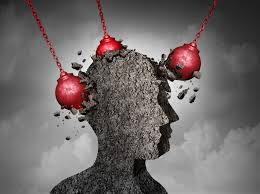7 Facts About Migraine That You Should Be Aware Of

Unless you suffer from migraines, you may believe that a migraine is synonymous with a severe headache. However, excruciating head pain is only one aspect of migraine disease, which is a medical illness. Nausea, dizziness, exhaustion, sensitivity to light and sound, and even temporary blindness are all frequent symptoms of this issue. Migraine symptoms and causes vary from patient to patient, and experts are just now beginning to comprehend the disorder and how to treat it. In this article, we have gathered seven facts about migraine that you should be aware of.
1. 50 percent of migraine sufferers are unaware of their condition
According to statistics, more than 29.5 million Americans suffer from migraines, with women suffering three times as much as men. This form of headache is characterized by throbbing pain on one side of the head, nausea or vomiting, and light sensitivity.
Many people believe they have tension headaches when they don't. Visit a headache center for treatment if the pain is severe enough to cause you to miss work or other activities. You may require a triptan-class prescription medication. To avoid migraine episodes, you may need to take preventative medicine every day.
2. Migraines can be hereditary
Many migraine sufferers have at least one close family member who also suffers from migraines. A kid who has one parent who suffers from migraines has a 50 percent risk of developing them as well, and if both parents suffer from migraines, the chances increase to 75 percent.
3. Migraine triggers vary
Migraine causes may differ from person to person and may arise from unexpected and unrelated sources. Some of the most frequent factors are stress, too much or too little sleep, dehydration, alcohol, and coffee. Some people suffer migraines after eating certain foods, such as cheese, while others are sensitive to weather changes, such as barometric pressure. Some migraine sufferers control their symptoms by identifying and avoiding triggers.
4. The majority of migraine sufferers do not experience an aura
Visual disturbances, such as flashing lights or fuzzy vision, are sometimes associated with migraine headaches. But these auras are uncommon, affecting only approximately 10% of migraine sufferers. In the same way, only approximately 15% of patients vomit. Nausea, sensitivity to light, and dizziness are all frequent migraine symptoms.
Furthermore, not all migraine headaches are unilateral or pulsing. If there are accompanying symptoms like nausea and light sensitivity, a headache that affects the entire head or feels like a tight band might be a migraine.
5. Sinus headache is a myth
Most people who think they have sinus headaches (don't confuse them with sinus infection) actually have migraines. The rest of them are most likely suffering from tension headaches. Migraine pain is typically placed above the sinuses, which is why it is often misdiagnosed as sinus pain. It's because pain relievers are included in so-called "sinus" drugs that you feel better. You'll require specialized migraine therapy for long-term relief.
6. Men are more prone to cluster headaches
Cluster headaches affect more men than women. These are severe headaches that happen every day or every few days at the same time. These are incapacitating, yet they normally only last 90 minutes. Cluster headaches are very common among heavy smokers and drinkers. Migraines affect more women than males.
7. Migraine can contribute to depression
Up to 40% of migraine sufferers in the United States also suffer from depression. Migraine patients are also more likely to develop anxiety, bipolar illness, and panic disorder. While the fear of unpleasant symptoms might create despair and anxiety in certain people, doctors think that mental condition is more than just a side effect of having migraines.
Both migraine and depression are linked to the generation of the brain chemical serotonin. That's why migraine sufferers are occasionally offered tricyclic antidepressants that boost serotonin levels.
Post a comment